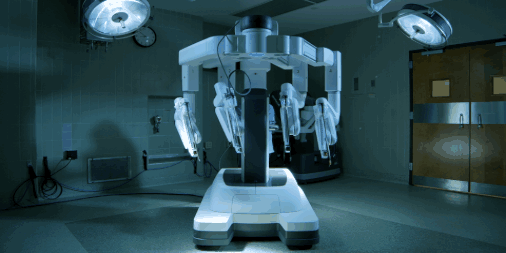Minimally Invasive Surgery
At ECHN, we utilize state-of-the-art, minimally invasive treatment options for the broadest range of patients. Using minimally invasive techniques, patients benefit from:
- A faster recovery time
- A shorter hospital stay
- Fewer complications
- Less pain
- Lower risk of infection
- Less blood loss
- Quicker return to normal activities
- Reduced costs
- Smaller incisions resulting in minimal scarring
- Better outcomes
Specialties that use minimally invasive surgery
- General surgery – Robotic or laparoscopic cholecystectomy and hernia repairs
- Colon and rectal surgery – Robotic or laparoscopic bowel resections
- Gynecologic surgery – Robotic or laparoscopic hysterectomy; Hysteroscopy
- Endovascular surgery – carotid endarterectomy
- Thoracic surgery – VATS procedures
- Orthopedic surgery – Mako Technology
da Vinci® Xi Surgical System

The da Vinci® Xi Surgical System is used to perform the most advanced techniques to provide excellent patient care and positive outcomes. With a 3D high-definition vision system, special instruments, and computer software, our highly trained and skilled surgeons can operate with enhanced vision, precision, dexterity, and control in very small, precise movements.
MAKOplasty
MAKO, short for MAKOplasty, is state-of-the-art robotic arm-assisted technology being used at ECHN for patients in need of partial knee resurfacing or total hip replacement.
This cutting-edge technology enables surgeons to have a more accurate pre-operative plan by providing a patient-specific 3D model of the hip or knee. During surgery, the surgeon guides the robotic arm based on the patient’s personalized pre-operative plan that is loaded into the MAKO system software. Therefore, surgeons can also receive real-time intraoperative feedback and have greater precision to remove and replace only the diseased bone, helping to preserve healthy bone and ligaments surrounding it.
Laparoscopy
Laparoscopic surgery is one of the first types of minimally invasive surgery. Typically, the surgeon will make one or more small incisions, which are called “ports.” The exact size of the ports will vary according to the procedure. Unlike an open surgery, the surgeon typically will not need to make extensive cuts through skin, muscle, tissue, and nerves. The surgeon then works through the ports, inserting short, narrow tubes called trochars. The next step is to insert surgical instruments, along with tiny video camera equipment, through the ports. The surgeon manipulates the instruments to perform the surgery, while watching video pictures sent back from the camera on a monitor.
Video-assisted Thorascopic Surgery (VATS)
Video-assisted thoracoscopic surgery (VATS) is a minimally invasive surgical technique used to diagnose and treat problems in the chest. A thoracoscope is inserted through a small incision between the ribs. This allows the surgeon to see the entire chest cavity without having to open up the chest or spread the ribs.
Arthroscopic Surgery
An orthopedic surgeon inserts a thin, flexible fiber optic video camera called an arthroscope through an incision the size of a buttonhole, near a joint (such as the knee), to examine, diagnose, and sometimes repair joint damage.
Hysteroscopy
A small, narrow telescope (a hysteroscope) is inserted through the vagina to allow visualization of the inside of the uterine cavity without the need for any incisions. This is often done to evaluate uterine bleeding. Specialized hysteroscopes are also used for treatment in some cases, such as the removal of fibroids, polyps, or scar tissue.

